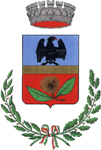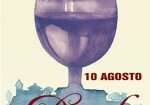 At 14 km from Asti, 20 from Casale and 25 by Alexandria
At 14 km from Asti, 20 from Casale and 25 by Alexandria
Airy and verdant hills from where you can admire the most beautiful peaks of the Alps, from Monviso to Monte Rosa, from the Matterhorn to Mont Blanc, framing the country.
The name recalls the chestnut woods, that once covered the hills of its territory and which now have been replaced by vast vineyards. The town of Castagnole is a pretty village, with characteristic views and ancient dwellings, many of them dating back to the 15th century, gathered around places of worship.

 The parish Church dedicated to San Martino formed a vicaria including the churches of s.. Euphemia and St. Margaret. In the sixteenth century the churches in Castagnole were, Besides the parish church, Santa Maria in castro cared for in medieval age by Domini loci, the Oratory of San Michele and the Annunziata, the chapel of the Virgin on the pot. In the 1714 It was decided the construction of the Church of San Martino on ancient and medieval unsafe building. But the practice is dragged, among the various events, until the 1756: little by little the new Church took shape with its bell tower so now comes in precious baroque style with three naves with lateral chapels decorated with three canvases of Moncalvo. Notable wooden statue of St. Margaret and a wooden statue representing the last supper, excellent work executed in Rome in the convent of Santa Maria. And two Renaissance putti, placed in the porch, dating 1589 with the coat of arms of the community, of which is already written.
The parish Church dedicated to San Martino formed a vicaria including the churches of s.. Euphemia and St. Margaret. In the sixteenth century the churches in Castagnole were, Besides the parish church, Santa Maria in castro cared for in medieval age by Domini loci, the Oratory of San Michele and the Annunziata, the chapel of the Virgin on the pot. In the 1714 It was decided the construction of the Church of San Martino on ancient and medieval unsafe building. But the practice is dragged, among the various events, until the 1756: little by little the new Church took shape with its bell tower so now comes in precious baroque style with three naves with lateral chapels decorated with three canvases of Moncalvo. Notable wooden statue of St. Margaret and a wooden statue representing the last supper, excellent work executed in Rome in the convent of Santa Maria. And two Renaissance putti, placed in the porch, dating 1589 with the coat of arms of the community, of which is already written.

 The Church of’ Annunciation parish versus lies, in beautiful Piedmontese Baroque with the carved Portal, but where the right side is covered by the modern block a little jarring of the Municipal House.
The Church of’ Annunciation parish versus lies, in beautiful Piedmontese Baroque with the carved Portal, but where the right side is covered by the modern block a little jarring of the Municipal House.
The chapel of San Rocco dates back to the 17th century and houses a wooden statue of Saint expressive: now is dedicated to our Lady of Fatima.

 It's’ can follow the unwinding of walls, in some places still in its archaic structure solid, that headband, heading with Spurs and spurs, the steep terrain leap. Remains of an ancient frontier fortress, last stronghold against the wishes of Asti Monferrato and Savoy, some leftovers with 14th century terracotta arches and tuff, with massive walls masters.
It's’ can follow the unwinding of walls, in some places still in its archaic structure solid, that headband, heading with Spurs and spurs, the steep terrain leap. Remains of an ancient frontier fortress, last stronghold against the wishes of Asti Monferrato and Savoy, some leftovers with 14th century terracotta arches and tuff, with massive walls masters.
A tower built into a private dwelling house, a wall, a fragment of that time testify bulwark and men have unfortunately deleted or altered the old building.
 A different architectural masterpiece is the historical cellars dug in the Tuff, where you can taste the local wines, first of all the Ruché di Castagnole Monferrato, a Doc with unique characteristics.
A different architectural masterpiece is the historical cellars dug in the Tuff, where you can taste the local wines, first of all the Ruché di Castagnole Monferrato, a Doc with unique characteristics.
 The crutin are ancient underground structures excavated in the Tuff sandstone material that cotiruisce much of the Monferrato territory. The use of these structures and’ always been to preservation of wines and foodstuffs as, carved deeply, allow you to have a temperature and a’ constant humidity in the year thereby avoiding those temperature changes as harmful to wine. In the caves of some local wine cellars are statues carved with figures of peasants into the tufa, dating back to last century.
The crutin are ancient underground structures excavated in the Tuff sandstone material that cotiruisce much of the Monferrato territory. The use of these structures and’ always been to preservation of wines and foodstuffs as, carved deeply, allow you to have a temperature and a’ constant humidity in the year thereby avoiding those temperature changes as harmful to wine. In the caves of some local wine cellars are statues carved with figures of peasants into the tufa, dating back to last century.
The country is also famous for its Sundial and for the great winepress located in the cellars of the Mercantile ", place the most important city events.







 Jesus Christ Passion
Jesus Christ Passion 



 Do you want to highlight your event or business?
Do you want to highlight your event or business? Alessandra Scotti Web Design Art Director, graphicsdesign, webdesigner
Alessandra Scotti Web Design Art Director, graphicsdesign, webdesigner B&B La Rana e La Salamandra House for rent and Bed & Breakfast in Loazzolo
B&B La Rana e La Salamandra House for rent and Bed & Breakfast in Loazzolo Educational Farm ArteMiele Genuine products and educational workshops to discover bees and silkworms
Educational Farm ArteMiele Genuine products and educational workshops to discover bees and silkworms